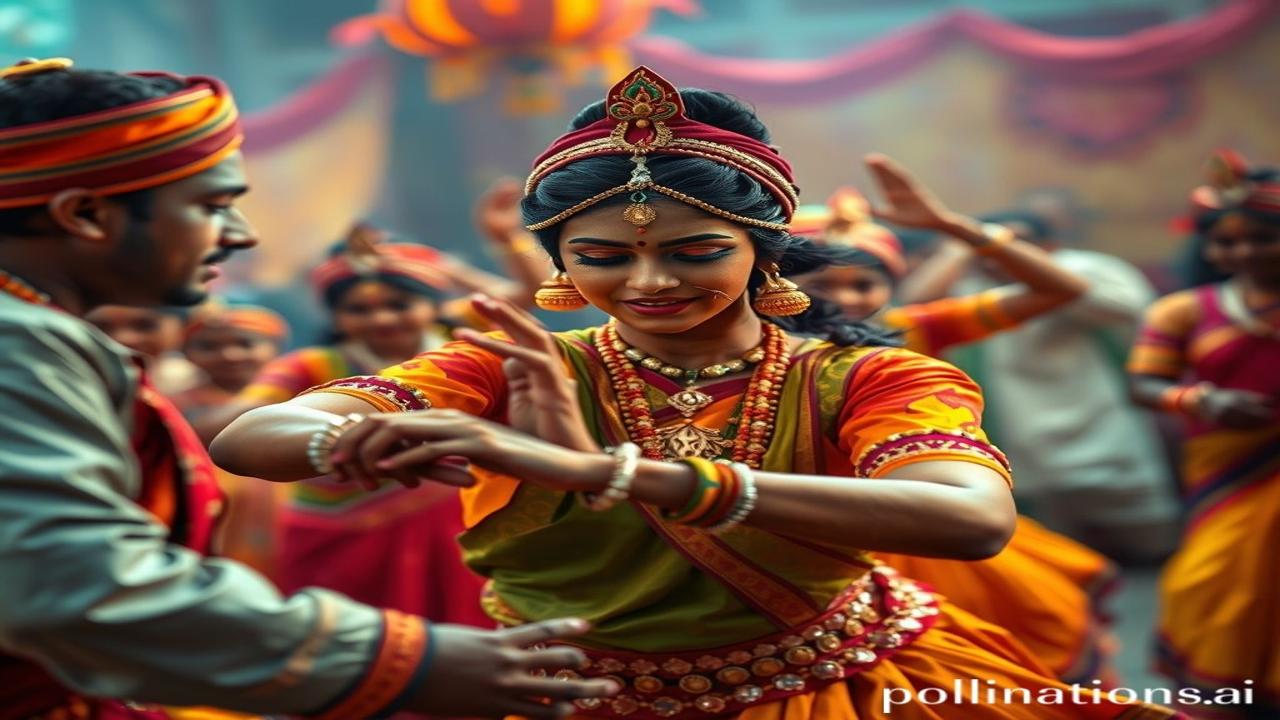Dil Ki Dhun, Paavon Ki Thakan: Music and Dance in Indian Festivals
Kabhi aankhen band karke socho, Diwali ki raat… the air thick with the scent of jasmine and burning diyas. The rhythmic clang of temple bells mixing with the laughter of children. Aur phir, dhire se, the strains of a shehnai rising above it all, leading into a devotional song, a bhajan that makes your soul vibrate. This is more than just sound; it’s the heartbeat of India, pulsing through its festivals, expressed in music and dance.
Sangeet aur Nritya: A Historical Tapestry
What are the roots of these traditions? They are as old as our civilisation itself! The Vedas, our oldest scriptures, speak of Sangeet – a holistic art form encompassing music, dance, and drama. From the ancient Indus Valley Civilization, where we found figurines poised in dance-like positions, to the opulent courts of the Mughal era, music and dance have been integral to our festivals and celebrations.
When and Where? Think about it – From the chants of Buddhist monks in Ladakh to the folk dances of Gujarat during Navratri, music and dance are interwoven with the fabric of our festivals across India. The Natya Shastra, an ancient Indian treatise on performing arts, dating back to the 2nd century BCE, lays down the framework for these art forms, shaping traditions that continue to this day.
Why is it important? Because these aren’t just performances; they’re expressions of faith, gratitude, and community. They are a way to connect with the divine, to celebrate the harvest, to remember our ancestors, and to pass down stories from one generation to the next.
Zameeni Sach: Celebrating Life Through Art
Imagine Ma Rukmini, a weaver in a small village in Rajasthan. Her calloused fingers deftly moving on the loom all year round. But during Teej, the festival celebrating marital bliss, she sheds her weary skin. She dons a vibrant lehnga, joins the women of her village, and dances with abandon to the beat of the dhol. Her laughter echoes through the desert air, carrying prayers for her husband’s well-being and her family’s prosperity.
Or consider the young warrior, Arjun, preparing for battle during Dussehra. He sharpens his sword, yes, but he also listens intently to the kirtans sung by the bards, inspiring him with tales of valor and righteousness. The rhythm of the drums fills him with shakti – the power to overcome any challenge.
“Maaji, yeh dhol ki awaaz dil ko cheer jaati hai!” Arjun’s younger brother exclaimed, feeling the energy coursing through his veins.
“Beta, yeh awaaz sirf dhol ki nahi, yeh hamari parampara ki awaaz hai. It will guide you,” Maaji replied, her eyes glistening with pride.
Dharohar aur Pehchan: Our Cultural Signature
Aaj bhi, from the grand Rath Yatra in Puri, where devotees dance in a frenzy to the rhythmic chants, to the Ganesh Chaturthi celebrations in Mumbai, where streets erupt in vibrant music and dance, we see the echoes of these ancient traditions.
These art forms are not relics of the past; they are living, breathing expressions of Bharatiyata – Indianness. They connect us to our roots, they shape our identity, and they remind us of the values that define us: devotion, community, resilience, and joy. In a world increasingly homogenized, these traditions provide us with a unique cultural signature.
Majedar Tathya ya Bhram-Bhanjak: Did You Know?
Log samajhte hain ki classical dances jaise Bharatanatyam sirf mandiron mein hi hote the. Lekin asli sach yeh hai that they were also performed in royal courts as a form of entertainment and diplomacy. The devadasis, the temple dancers, were highly respected artists, often proficient in multiple languages and arts. They were not just dancers; they were intellectuals and cultural ambassadors.
Drishya aur Bhavnayein: The Sensory Experience
Think of the aroma of incense swirling in the air of a temple, the cool touch of marble floors beneath your bare feet, the shimmering colors of silk saris swaying to the rhythm of the dance. The echo of mantras reverberating through the ancient halls, the sight of a thousand diyas illuminating the faces of devotees. The feeling of pure, unadulterated joy washing over you as you lose yourself in the music and dance. These are the sensory experiences that make Indian festivals so deeply moving and unforgettable.
Antim Vichar ya Uddharan: A Lasting Thought
“Sangeet aatma ka bhojan hai, nritya jeevan ka utsav.” (Music is the food of the soul, dance is the celebration of life.) May the vibrant melodies and graceful movements of our festivals continue to nourish our souls and enrich our lives for generations to come.
